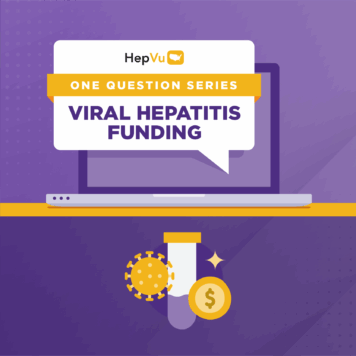Judith Feinberg has a joint appointment in the West Virginia University School of Medicine as a professor of Behavioral Medicine & Psychiatry and Medicine/Infectious Diseases. She is the Vice Chair of the HIV Medicine Association and a nationally-recognized expert on the opioid epidemic in West Virginia, Appalachia and rural America.
Q: The number of new Hepatitis C infections rose by 21% between 2015 and 2016, and that increase has been even higher in the Appalachian region. Can you speak about the role the opioid epidemic has played in driving new Hepatitis C infections? Why has Appalachia, in particular, been so deeply impacted?
A: The epidemics are inextricably intertwined. Hepatitis C is extremely contagious when you are sharing infected injection equipment, so the opioid epidemic has certainly had an effect on the spread of Hepatitis C. Sadly, the opioid epidemic has not peaked yet, and individuals are going to continue to be at risk for Hepatitis C, along with Hepatitis B and HIV, because of injection drug use.
In Appalachia, there are many factors influencing the spread of Hepatitis B and C. Many people who live in Appalachia engage in physically demanding work that can lead to injuries, and turn to prescription opioids to control pain. When prescribing opioids became more common in the 1990s, there was an enormous number of people receiving opioids for chronic pain. When we realized that over-prescribing was leading to a massive increase in addiction, there was a clampdown in prescriptions, which in turn led to pills becoming scarcer and people turning to the street market for heroin and fentanyl.
Doctors in my generation were taught to fear opioids and only prescribe them when the pain was extreme, but in the 1990s opioids were marketed to doctors and hospitals as not being addictive and this was exacerbated by making pain the “fifth vital sign.” This drove many patients to expect painkillers for every complaint and drove doctors to embrace the use of opioids and prescribe them frequently. Now, here we are.
You can’t imagine what life in these communities is like due to the opioid epidemic. You drive through little towns in West Virginia, and half of the storefronts are boarded up. You can see that the bottom of the economy has fallen out of these places due to the loss of jobs in extraction industries like mining, and there are very few resources. A middle school principal in Wyoming County, WV was telling us how few kids in her school live in a home with two biological parents. We’re talking about communities where over 40 percent of the children are in foster care or are being raised by grandparents.
There is no aspect of life that is untouched by the opioid epidemic. We’ve got to do better than this, or we’re going to lose way too many human beings as a result.
Q: You are involved in a federally funded project by WVU researchers and health professionals to prevent HIV and Hepatitis C outbreaks related to injection drug use and the opioid epidemic (“Rural West Virginia Responds to Opioid Injection Epidemics: From Data to Action”). Can you tell us more about this project and the strategies you are using to help prevent HIV and Hepatitis C outbreaks?
When I talk to people in West Virginia, it’s hard to find somebody whose immediate family or extended family or next-door neighbor isn’t intimately aware of what the problems are. This epidemic has torn the fabric of these rural communities apart. Despite the devastation, there are local people taking leadership roles and doing what they can to rebuild their communities. I think the biggest problem in general across all of rural America is that these areas don’t have the resources and money to fight this terrible epidemic.
The “From Data to Action” project is focused on these poor rural areas in southern West Virginia where injection drug use is prevalent, leaving people who inject drugs at risk for viral hepatitis and HIV. Six of the eight counties we are targeting in WV are among the top 25 counties in the U.S. in their risk for an HIV outbreak like the one that recently occurred in Scott County, Indiana, according to CDC. Nationally, West Virginia has the highest rate of acute hepatitis B and C, overdose fatalities and babies born in withdrawal from maternal opioid use. Our goal is to help improve access to healthcare services, such as HIV and Hepatitis C testing and harm reduction programs, such as naloxone distribution to prevent overdose death and syringe service programs. We want people who inject drugs to be exposed to an environment where they can be treated without stigma, and where they can access testing for viral hepatitis and HIV and linkage to care—whether it be medical, mental health, or addiction treatment.
This first year, we have been working to estimate the actual number of people who are injecting in these communities and identifying any laws or regulations that are obstacles to achieving the final goals. When we gather all of this information, we will be eligible for additional funding to develop an integrated model of healthcare delivery and harm reduction and then implement the model. We are hopeful that we can help communities develop systems and healthcare responses that will bring people in for testing and bring people into care.
Q: You have been a leader in HIV/AIDS clinical research for more than 30 years, you established Ohio’s third syringe exchange—the Cincinnati Exchange Project—in 2014, and you are a leading expert on the opioid epidemic in West Virginia. What drives your passion?
I care immensely, enough so that when I retired from the University of Cincinnati I went to West Virginia University and switched my focus from research on HIV treatment to working at the intersection of the opioid epidemic and its associated infectious diseases by preventing HIV, hepatitis C, and hepatitis B as well as ensuring access to testing and treatment.
There is so much about the opioid epidemic that is incredibly reminiscent of the AIDS epidemic from early in my career. It has terrible stigma. AIDS is an infection and addiction is a chronic relapsing brain disease. People are held responsible for these diseases as if the disease is a moral judgment instead of just a disease. What drives me is this sense of urgency. We are losing people at such an incredible rate and, just like AIDS, we’re not only losing human lives, but we’re losing them at the peak of adult life: people in their 20s, 30s, and 40s. And then leaving their children in crisis.
It’s like cutting a whole generation out of the social fabric. In places like rural West Virginia, we’re not only losing the parental generation to incarceration, overdose fatality, hepatitis B and hepatitis C and heart infection (endocarditis), but it’s also having an incredible impact on their children. We have an entire generation of kids who have to be living with PTSD; kids go off to second grade and then worry whether mommy or daddy will be alive when they get home.
When I was trying to start the syringe services program in Southwest Ohio, government officials asked me why I cared and told me to “just let them die. One less junkie.” I would just look at them in horror and say, you know, this is the problem with that approach. When I graduated from medical school, I took an oath to help save lives, not an oath to “just let them die.” My purpose is to help people live and help them live more healthily, not sit by and let them die. I guess I have always had a very strong moral commitment to helping people in trouble, especially underdogs.
Q: As a Professor of Behavioral Medicine & Psychiatry at West Virginia University’s School of Medicine, what do you want future medical professionals to understand about the opioid, viral hepatitis and HIV syndemic?
First of all, I want the next generation to understand that addiction is a chronic relapsing brain disease and that these individuals should not be stigmatized by healthcare professionals as they so often are currently. I want healthcare professionals to treat these individuals who are suffering from the disease of addiction with the empathy, personal respect, and the care they deserve.
I also want young professionals to see that advocacy is a very important part of being a healthcare professional. In addition to taking care of people, you can help advocate for more resources and more research to inform that care. Being passive is much less rewarding and much less morally appropriate than taking an active role in your patient’s lives. At that point, your patient becomes society. Doctors have an enormous impact on our entire way of life, and you can and should be a force for good.
Q: May is Hepatitis Awareness Month and May 19th is Hepatitis Testing Day. What is one thing you ask people to do in recognition?
Do everything that you can to encourage people to be tested, especially those who are injecting drugs. Approach addiction as the disease state it is and put that stigma aside. These are human beings; they’re suffering. No one wants to be addicted and, once they are, they feel so caught, and it is a terrible struggle. Be kind, be empathetic, and encourage people to get tested and to get into care. If we could just get people tested and get them into care, then people suffering from addiction don’t have to suffer additional medical misery from HIV and viral hepatitis.



